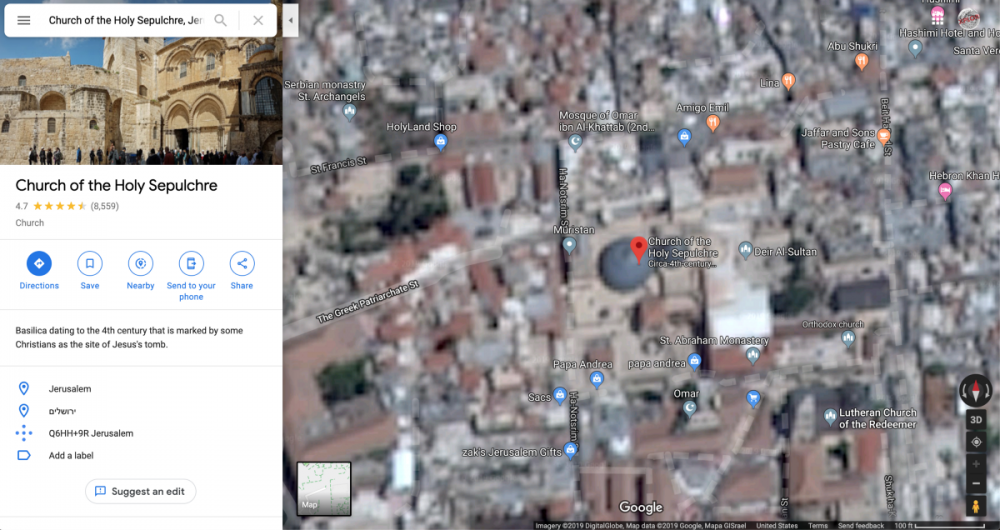
Israel-Gaza - Why is the region blurry on Google Maps
Israel-Gaza: Why is the region blurry on Google Maps?
This is an issue that has been brought to light by researchers who have used open-source, publicly available information - including mapping data - to locate and document attacks.
"The lack of high-resolution satellite images from Israel and the Palestinian territories handicaps us," Samir, an open-source investigator, explains. Indeed, much of Israel and the Palestinian territories appear on Google Earth as low-resolution satellite imagery, despite the fact that satellite companies provide higher-quality images. In Gaza City, it is nearly impossible to see the cars. Compare that with Pyongyang, the secretive capital of North Korea, where the cars are sharply defined and it's possible to make out individual people.
What is the significance of satellite imagery?
Satellite imagery has become a critical component of conflict reporting. Investigators are using satellites to corroborate the locations of missile fire and targeted buildings in Gaza and Israel during the latest Middle East conflict. However, the most recent imagery for Gaza is low resolution and thus blurry on Google Earth, the most widely used image platform.
"The most recent Google Earth image is from 2016 and looks like trash; I zoomed in on a random rural area of Syria and discovered that it has had over 20 images taken in very high resolution since that time," tweeted Aric Toler, a Bellingcat reporter. Google claims that its goal is to "refresh densely populated areas on a regular basis," but that has not been the case in Gaza.
Are images in high-resolution available?
Until last year, the US government imposed a cap on the quality of satellite images of Israel and the Palestinian territories that American companies could sell commercially. This restriction was incorporated into the Kyl-Bingaman Amendment (KBA) – a 1997 piece of US legislation – to address Israeli security concerns.
US satellite image providers were permitted to offer lower-resolution images with a pixel size of no less than 2m under the KBA (6ft 6in, making an object the size of a car just about visible, but no smaller). While it is not uncommon for military bases to be blurred, the KBA was the first time an entire country was subjected to such a restriction. Although the law specifically mentioned Israel, it was also applied to the Palestinian territories. However, as non-US providers, such as the French company Airbus, became capable of providing these images at a higher resolution, the US faced increasing pressure to lift its restrictions.
The KBA was repealed in July 2020, and the US government now permits American companies to provide significantly higher-quality images of the region (each pixel can now be as small as 40cm, so that objects the size of a person could be readily picked out).
"The initial motivation was scientific," explains Michael Fradley, an archaeologist at the University of Oxford and one of the academics who successfully campaigned to change the amendment.
"We needed a consistent data source for our project, which meant having access to high resolution imagery over the Occupied Palestinian Territories comparable to what we have over the rest of the region."
Therefore, why is Gaza still blurry?
The BBC spoke with representatives from Google and Apple (whose mapping apps also show satellite images). Apple stated that it was working to update its maps to a 40cm resolution in the near future. Google informed us that its images are sourced from a variety of sources and that it is constantly looking for "opportunities to refresh [its] satellite imagery as higher-resolution imagery becomes available." However, it added that it had "no immediate plans to share."
"Given the gravity of current events, I see no reason why commercial imagery of this area should continue to be purposefully degraded," Nick Waters, an open-source investigator for Bellingcat, wrote on Twitter.
Who actually takes the images?
Public mapping platforms such as Google Earth and Apple Maps rely on imagery supplied by companies that own satellites.
Two of the largest, Maxar and Planet Labs, are now making high-resolution images of Israel and Gaza available. "As a result of recent US regulatory changes, imagery of Israel and Gaza is being provided at a resolution of 0.4m (40cm)," Maxar said in a statement. Planet Labs confirmed to the BBC that it provides imagery with a resolution of 50 centimeters. However, open-source investigators rely heavily on freely available mapping software and frequently lack direct access to these high-resolution images.
What information can high-resolution imagery provide?
In 2017, Human Rights Watch researchers collaborated with satellite provider Planet Labs to document the military's destruction of Rohingya villages in Myanmar.
They were able to map the extent of damage to more than 200 villages in the area by comparing pre- and post-storm 40cm-resolution satellite imagery.
The evidence appeared to corroborate Rohingya claims that their homes had been targeted by the military after fleeing Myanmar for neighboring Bangladesh.
Satellite imagery has also been critical in tracking events in China's Xinjiang region, particularly the network of "re-education" centers established there for Uyghurs.

